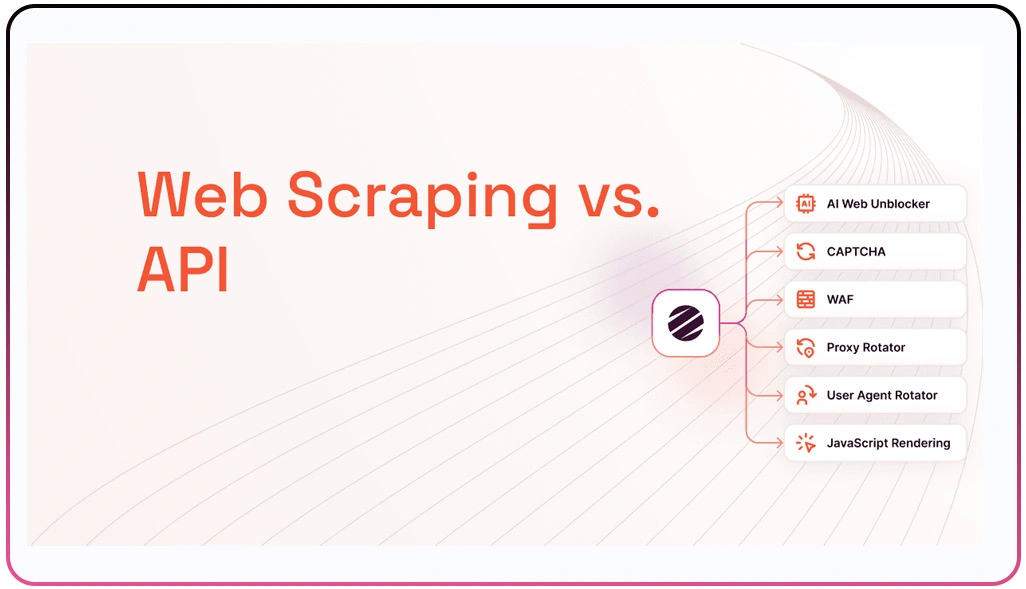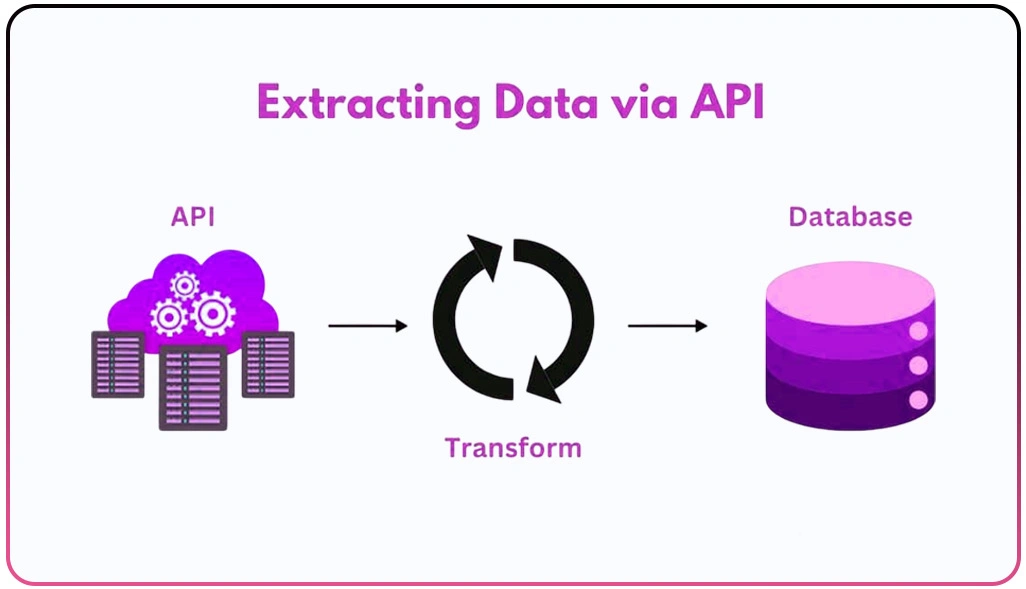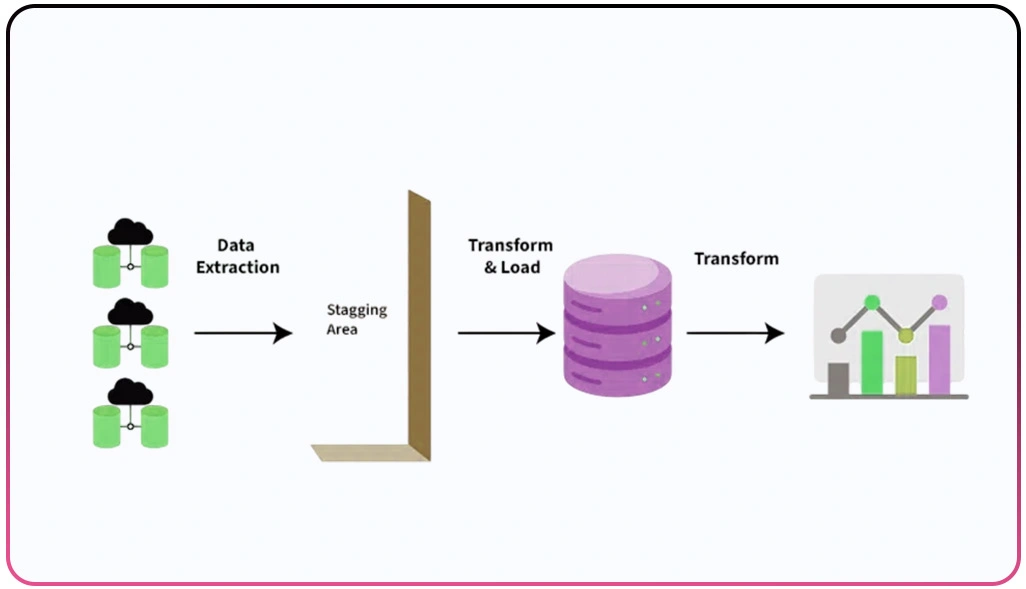How Can API vs Web Scraping Comparison Shape Real-Time Data Workflow and Cost-Benefit Strategies?
August 14

Introduction
In today’s rapidly evolving digital landscape, businesses rely heavily on the efficiency and accuracy of their data pipelines. From market monitoring and competitor analysis to critical operational decisions, the method used to collect and process data can directly impact profitability. A key strategic choice for many organizations lies in deciding between Real-Time Data Scraping vs APIs. While both enable access to timely and actionable insights, their workflows, scalability potential, and cost models differ considerably.
Instead of focusing solely on the technical aspects of data acquisition, businesses should evaluate how each approach affects integration flexibility, adaptability to market shifts, and long-term operational expenses. A well-structured API vs Web Scraping Comparison enables the development of a more efficient, scalable, and sustainable real-time data strategy.
Evaluating the Impact on Data Workflows

When making an API vs Web Scraping Comparison, the decision goes far beyond selecting a technical tool—it’s about determining how that choice will influence the efficiency, flexibility, and scalability of your data workflow. Businesses need to evaluate whether their operations benefit more from structured, pre-formatted data delivery or highly adaptable, on-demand extraction methods.
- Structured & Reliable with APIs: APIs provide well-organized, pre-defined data feeds that ensure reliability and consistency in delivery. However, they often come with constraints, such as limited customization options and dependency on the provider’s update frequency.
- Flexible & Broad Coverage with Scraping: Web scraping enables the collection of a wider range of data across multiple sources, customization of extraction parameters, and quick adaptation to changing requirements. The trade-off is the need for regular maintenance, monitoring, and compliance management.
- Hybrid Approaches for Strategic Advantage: Many organizations find that a blended approach—leveraging the reliability of APIs alongside the adaptability of scraping—can deliver the most effective results. The choice often hinges on factors like the required data volume, freshness, update frequency, and level of specificity.
Choosing the proper integration method directly impacts whether your operations run as a smooth, real-time data engine or suffer from frequent manual interventions. This is why Real-Time Data Scraping vs APIs assessments should involve cross-functional input, from IT specialists to operations managers and business intelligence analysts, ensuring that the chosen approach supports both technical and strategic goals.
Quick Comparison of API and Web Scraping for Real-Time Data Strategies
When deciding between APIs and scraping, a clear side-by-side view helps highlight the differences in speed, flexibility, and cost. This snapshot gives decision-makers an immediate understanding of which option best supports their real-time data workflows.
| Feature | API | Web Scraping |
|---|---|---|
| Data Structure | Pre-defined, consistent format | Fully customizable output |
| Speed | High, limited by provider’s rate limits | Variable, depends on setup and site load |
| Flexibility | Limited to available endpoints | Can extract from almost any online source |
| Maintenance | Low, handled by provider | Requires updates when site changes |
| Cost Model | Subscription or pay-per-call | Infrastructure & development costs |
| Best For | Stable, structured, high frequency data | Broad, dynamic, or hard-to-access data |
Cost-Benefit Considerations for Modern Businesses

In today’s competitive market, any evaluation of data strategies should include a thorough Scraping vs API Cost Analysis. While APIs can appear cost-friendly due to their fixed subscription plans, the reality is that they often carry hidden expenses. These may include extra fees for exceeding query limits, paying for higher rate limits, or unlocking premium data endpoints—all of which can add up over time.
In contrast, web scraping has the potential to reduce dependency on external vendors, often resulting in lower recurring fees. However, it does demand an upfront and ongoing investment in infrastructure and maintenance. Organizations relying on scraping need to budget for server resources, proxy rotation systems, anti-bot defenses, and continuous data quality monitoring to ensure accuracy and reliability.
When preparing a budget for API Access vs Real-Time Scraping Workflow, decision-makers should:
- Assess the total cost of ownership over a defined period: Project expenses across one, two, or three years, considering setup, licensing, infrastructure, and maintenance costs to get a complete financial picture.
- Factor in scalability and growth requirements: Understand how costs will evolve if your data needs expand—both scraping and APIs can become expensive as query volumes and processing demands rise.
- Analyze ROI beyond raw costs: Look at how each approach impacts speed of decision-making, operational efficiency, and competitive positioning in your industry.
By evaluating the full life-cycle expenses and strategic benefits of each method, businesses can make informed decisions about whether to rely solely on one approach or adopt a hybrid model that balances efficiency, flexibility, and cost control.
Performance and Flexibility in High-Pressure Environments

In competitive markets, where every second counts, performance can be the ultimate game-changer. Whether it’s reacting to sudden stock market fluctuations, adjusting to dynamic pricing, or capitalizing on limited-time promotions, timely data access is crucial. In such scenarios, API vs Scraper Performance evaluations offer critical insights into which method best suits specific operational demands.
- APIs perform exceptionally well in predictable, controlled environments with stable and structured data formats. Their consistency and speed make them ideal when the data source is clearly defined and unlikely to change frequently.
- Scraping delivers strong results in dynamic or fragmented environments, especially when multiple sources must be combined to create a complete dataset. It’s particularly valuable when no single provider offers all the required data in one place.
From a flexibility perspective, Data Extraction API vs Scraping comparisons often reveal that scraping takes the lead when businesses need custom logic for parsing, transforming, and integrating data into their systems. On the other hand, APIs tend to be quicker to implement if the data format already aligns perfectly with a business’s requirements.
Looking ahead, Real-Time Data Scraping 2025 trends indicate continued innovation in both technologies. APIs are becoming faster, richer in content, and more adaptable, while scraping is gaining from advanced machine learning and automation frameworks that reduce the complexity and cost of ongoing maintenance.
Building Smarter Data Pipelines for the Future

The long-term effectiveness of any real-time strategy relies on creating a Data Pipeline For Real-Time Scraping or a robust API-based framework that can adapt and expand alongside business growth. A future-ready pipeline should not only manage large data volumes but also ensure smooth transformation, storage, and analysis without performance bottlenecks.
To make your pipeline scalable, resilient, and adaptable, there are several critical aspects to consider:
- Automation of Error Handling: Implement intelligent monitoring and automated recovery processes to detect failures, resolve issues instantly, and minimize operational downtime.
- Scalability in Infrastructure: Design systems that can dynamically scale computing power and storage to manage sudden spikes in data collection demands efficiently.
- Modular Architecture: Build flexible components that allow seamless switching between API-based collection and scraping methods, ensuring adaptability to evolving requirements.
Organizations focusing on enhancing their API Data Integration vs Scraping capabilities should also explore hybrid pipelines—integrated systems that can combine or alternate between both methods based on real-time availability, data freshness, and urgency.
In highly competitive sectors, Real-Time Scraping For Business Intelligence offers a decisive advantage by enabling quicker trend detection, deeper insights, and faster decision-making compared to relying solely on static API data feeds.
How Web Data Crawler Can Help You?

We specialize in helping businesses navigate the complexities of Real-Time Data Scraping vs APIs with tailored solutions that align with operational goals and budget considerations. Our expertise ensures you get accurate, timely, and relevant data exactly when you need it.
We can support your data strategy with:
- Custom-built solutions for scraping or API use.
- Live data feeds for immediate insights.
- Scalable systems that grow with your needs.
- Secure and compliant data practices.
- Optimized performance for speed and reliability.
- Cost-effective delivery without compromising quality.
Whether you’re building a new system or enhancing your current one, our approach balances flexibility, accuracy, and efficiency, helping you get the most out of API Data Integration vs Scraping strategies.
Conclusion
Making the correct choice between Real-Time Data Scraping vs APIs can redefine how quickly and effectively your business responds to market changes. The right strategy ensures you capture accurate, timely insights while optimizing both operational flow and long-term costs.
If you’re ready to enhance efficiency and boost ROI, start by evaluating your Scraping vs API Cost Analysis with expert guidance. We are here to help you design a future-ready data strategy. Contact Web Data Crawler today to discuss your needs and discover the most effective solution for your goals.